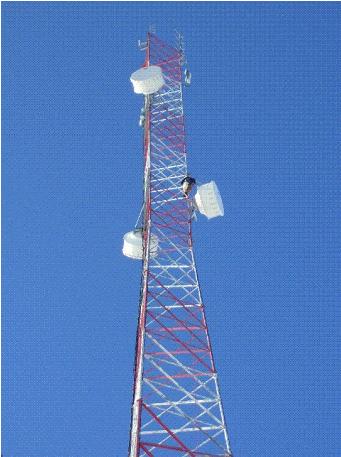Wireless Network Designs
Wireless communication has changed dramatically during the first decade of the 21st century. The advancements in extra-large-scale chip designs and integration combined with a massive upgrade in tower infra-structure to serve the digital telecommunication industry, has introduced new technologies. This then changed some of the user patterns we have come accustomed to. Whereas during the last 3 decades of the previous century, wireless communication was only enjoyed by the few, was expensive and bulky, today almost everyone in North-America can have access to a cheap cell-phone that often incorporate 2-way radio features with group-calls as the Mike system, the Fido and others.
Wireless network design during the 70s and 80s was for the most part restricted to VHF and UHF frequencies for predominately voice communication systems and not until the early eighties did the 400 MHZ and 800 MHZ trunking system gain in popularity. This was in part because of the cost benefits of the phase-locked-loop reducing the size of the equipment and also, because of the greater need of large area communication systems as employed by law-enforcement agencies, health-care providers, construction companies, trucking companies and many others.
Network design for wireless communication systems continued to change from voice-only systems to voice and data systems and with the ongoing technical advancements, consumer electronics today is small, cost effective and has moved on into the microwave frequency spectrum, enabling voice communication as well as high-speed mobile Internet access for data transfer.
Alpha-Beta Communication has done network designs for wireless networks operating from voice-only Low-Band operating between 27 MHZ-50 MHZ to the VHF spectrum between of 140 MHZ to 175 MHZ, to the low UHF spectrum, the high UHF and into the Microwave bands and gigabyte transmissions in the 80 GHZ spectrum. The short wave-length of the microwave bands have created unique challenges to the network designs, have introduced new demands on the wireless infra-structures and as the need for wireless communication continues to increase, new and higher frequency bands will have to be made available to meet the insatiable requirements of a population wanting to remain in constant contact with the connected world.
Wireless network design during the 70s and 80s was for the most part restricted to VHF and UHF frequencies for predominately voice communication systems and not until the early eighties did the 400 MHZ and 800 MHZ trunking system gain in popularity. This was in part because of the cost benefits of the phase-locked-loop reducing the size of the equipment and also, because of the greater need of large area communication systems as employed by law-enforcement agencies, health-care providers, construction companies, trucking companies and many others.
Network design for wireless communication systems continued to change from voice-only systems to voice and data systems and with the ongoing technical advancements, consumer electronics today is small, cost effective and has moved on into the microwave frequency spectrum, enabling voice communication as well as high-speed mobile Internet access for data transfer.
Alpha-Beta Communication has done network designs for wireless networks operating from voice-only Low-Band operating between 27 MHZ-50 MHZ to the VHF spectrum between of 140 MHZ to 175 MHZ, to the low UHF spectrum, the high UHF and into the Microwave bands and gigabyte transmissions in the 80 GHZ spectrum. The short wave-length of the microwave bands have created unique challenges to the network designs, have introduced new demands on the wireless infra-structures and as the need for wireless communication continues to increase, new and higher frequency bands will have to be made available to meet the insatiable requirements of a population wanting to remain in constant contact with the connected world.


